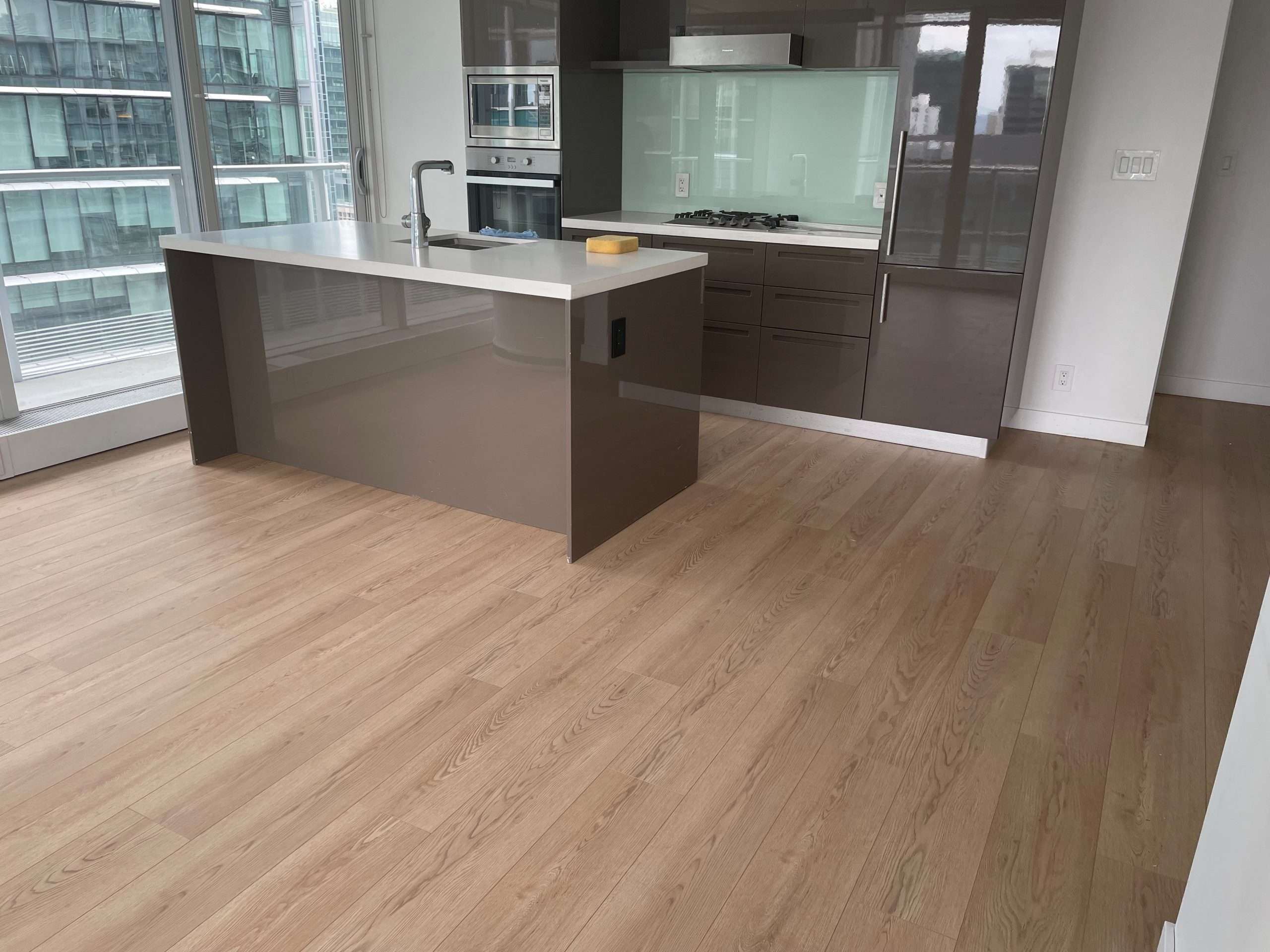Laminate flooring is a type of flooring that consists of multiple layers of synthetic materials, that are fused together using heat and pressure. The top layer of this floor is a photographic image of a natural material, such as hardwood or stone, that is printed onto the surface of the flooring. This gives laminate flooring the appearance of real wood or stone, but at a lower cost. It is often chosen for its durability, affordability, and ease of installation. It is resistant to scratches, stains, and wear and tear, making it a popular choice for high-traffic areas in homes and commercial spaces. Laminate flooring is also relatively easy to clean and maintain, requiring only regular sweeping and occasional mopping.
One downside of laminate flooring is that it cannot be refinished or sanded down like hardwood flooring, which means that if it becomes damaged or worn out, it must be replaced. Additionally, laminate flooring is not as visually appealing or authentic-looking as natural hardwood or stone flooring, although it can still provide a similar aesthetic at a lower cost.
Laminate flooring is designed to be easy to install, often using a click-and-lock system that allows planks to be snapped together without the need for glue or nails. This makes it a popular choice for DIY projects. However, it is important to ensure that the subfloor is level and free from debris before installation to ensure the planks lie flat and do not shift over time. Laminate is relatively easy to maintain. It can be swept or vacuumed regularly to remove dirt and debris, and occasional mopping with a damp mop and mild cleaner is sufficient to keep it clean. It is important to avoid excessive moisture, however, as this can cause the floor to warp or buckle. Spills should be wiped up promptly to prevent damage to the floor.



